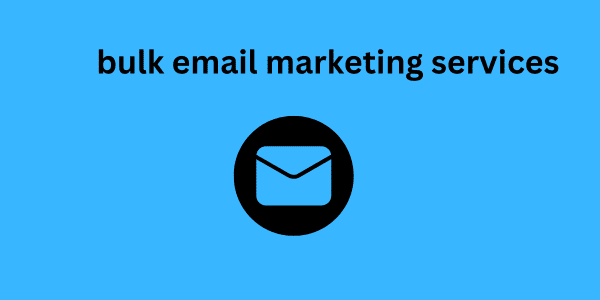Last month we created a content plan for newsletters .
This time we will return to the topic of analytics in bulk email marketing services the results of campaigns. Again, sent according to the plan need to be measured and somehow interpreted in order to plan your subsequent actions.
You can analyze the email channel at three levels:
| • A single campaign | |
| • Campaign groups (type of letters) | |
| • Channel as a whole | |
We will talk about working with these levels further – as usual, with examples ↓↓
Level 1: Campaign
Campaign -level analytics is probably the most covered in email marketing articles. We prepare a specific newsletter, send it to our subscribers, and then look at what happens.
At this level live such “classic” indicators as:
| For more details, see the blog article: Email Marketing Performance Metrics |
Here we can also add statistics from web analytics services (Google Analytics, Yandex.Metrica), which we can extract if we mark links in the letter with UTM tags:
| • Traffic metrics (number of pages, time on site, bounces) | |
| • Conversion to target action (requests, orders, etc.) | |
| • Financial indicators (income, average check) | |
| See more: Advanced analytics of mailings Calculating profit from mailings |
Digging deeper, we find a host of additional ways to improve our understanding of campaign results:
| • Click map | |
| • Reasons for unsubscribing and profiles of those who unsubscribed | |
| • Data from webvisor | |
| See the article: Super-Advanced Email Analytics |
For mailings on a specific topic, you can use indicators that characterize their specificity. For example, for letters with product selections in online stores, we pay attention to:
| • Number of products/product categories in the mailing list | |
| • Average price tag for goods | |
| • Share of paid orders | |
| See more:Analytics of online store mailings |
In this way, make sure mobile users find the site it is possible to analyze not only mass mailings sent “manually”, but also individual automatic letters , where we will be interested in the same data.
| Details in the article: Statistics of automatic mailings |
In general, as you can easily see, there can be a lot of indicators at the level of individual campaigns. Therefore, sometimes the task arises not to increase their number, but, on the contrary, to decrease it in order to fit the analytics into an acceptable time frame.
| See details: Email Analytics in 5 Minutes |
One way or another, all this wealth of indicators serves to ensure that we can measure the results of the sent mailing quite accurately and understand a lot about the reaction of subscribers to it.
Here’s what it looks like in practice:
| The delivery is excellent, views and clicks are at a good, average level, the unsubscribe rate is slightly increased, spam complaints are normal, orders and income are normal – a stable result for the mailing. |
Level 2: Campaign Group (Email Type)
When analyzing the results of a group of campaigns, we are talking about the transition from one mailing to several similar letters , which we can combine according to some feature.
For example, it could be a sequence of mailings announcing some promotion (start / promotion is in full swing / promotion is ending – hurry up). Or a welcome series of automatic letters for new subscribers ( welcome series ).
Here, our focus shifts from individual campaign metrics to aggregate and average metrics:
| • Total sending volume (how many emails were sent in total) | |
| • Average views/clicks (absolute and relative) | |
| • Average unsubscribe/spam complaint rate. | |
If we take data from web analytics services, we are interested in the aggregate data on UTM tags used in emails:
| • Attracted traffic from letters (sessions/visits) | |
| • Conversion to target action (absolute and relative) | |
| • Financial indicators (total income, average check) | |
We can take a larger scale and talk about the results of not campaigns grouped in some way, but entire types of letters :
| • Bulk mailings ( Summary statistics of mailings ) | |
| • Trigger emails ( How to simplify trigger email statistics ) | |
| • Transactional letters ( How to keep statistics of notifications ) | |
The indicators become somewhat smaller, tg data because we take a “larger cell”, but there can still be a dozen or more of them.
For example, here is what the general statistics of automatic emails with product recommendations (abandoned product viewing, abandoned cart, offer of related products, etc.) sent through a specialized service like RetailRocket look like :
Level 3: Channel as a whole
Finally, at the top of the “pyramid” are the results of all campaigns, all groups of letters sent via email on the project – that is, we analyze the email channel as a whole .
Aggregate indicators for analysis:
| • Email traffic | |
| • Conversion to target action (in absolute numbers and in %) | |
| • Financial indicators (total channel income, average bill) | |
We can break down the types of emails to assess how much they contribute to the email channel:
| • Bulk mailings (% of total email results) | |
| • Trigger emails (% of total email results) | |
| • Transactional emails (if we take them into account in email statistics) | |
It is also interesting to evaluate the share (%) that the email channel makes up in the overall project indicators received from all traffic sources:
| • % of traffic | |
| • % of applications/orders | |
| • % of income | |
The last metric takes us to the most general level , characterizing the effectiveness of email marketing. If we want to understand how well our mailings work, we only need to look at this indicator. Let’s say it is 10-11% of the project’s turnover: well, we can say that the mailings work at a good, average level.
| For more information on the criteria for evaluating email %, see Chapter 4 of my book: “Practical Email Marketing” |
To compare with other channels, we can use additional metrics such as ROI and cost per click . As a rule, email has higher ones than other channels (for example, contextual advertising).
Taking into account the specifics of the project and our goals, additional, more “advanced” metrics are also available, such as LTV or how the email channel reduces the percentage of customer churn .
But if we take the case of a small or medium-sized project that does not require in-depth analytics, then the “gentleman’s set” of channel efficiency assessment indicators may look something like this:
Moving between levels
Needless to say, we can move between analytical levels both up and down at any time, clarifying the question that interests us.
We get income from the final two mailings above average by ~300 thousand rubles. The email channel returned to a share of 10% of turnover — the campaign fulfilled its task and stimulated orders.
We noticed the problem at the top level. In addition, refined its location at the middle level, and moved on to solving it at the bottom. In addition, tactical level of individual campaigns. Then we moved back up to evaluate the results achieved.
If our analytics are set up correctly. Again, we measure a sufficient number of indicators (possibly doing this in an automated way . In addition, displaying data in dashboards for mailings), we have the opportunity to freely move from level to level. In addition, gaining more understanding and control over the situation at any given moment in time.

